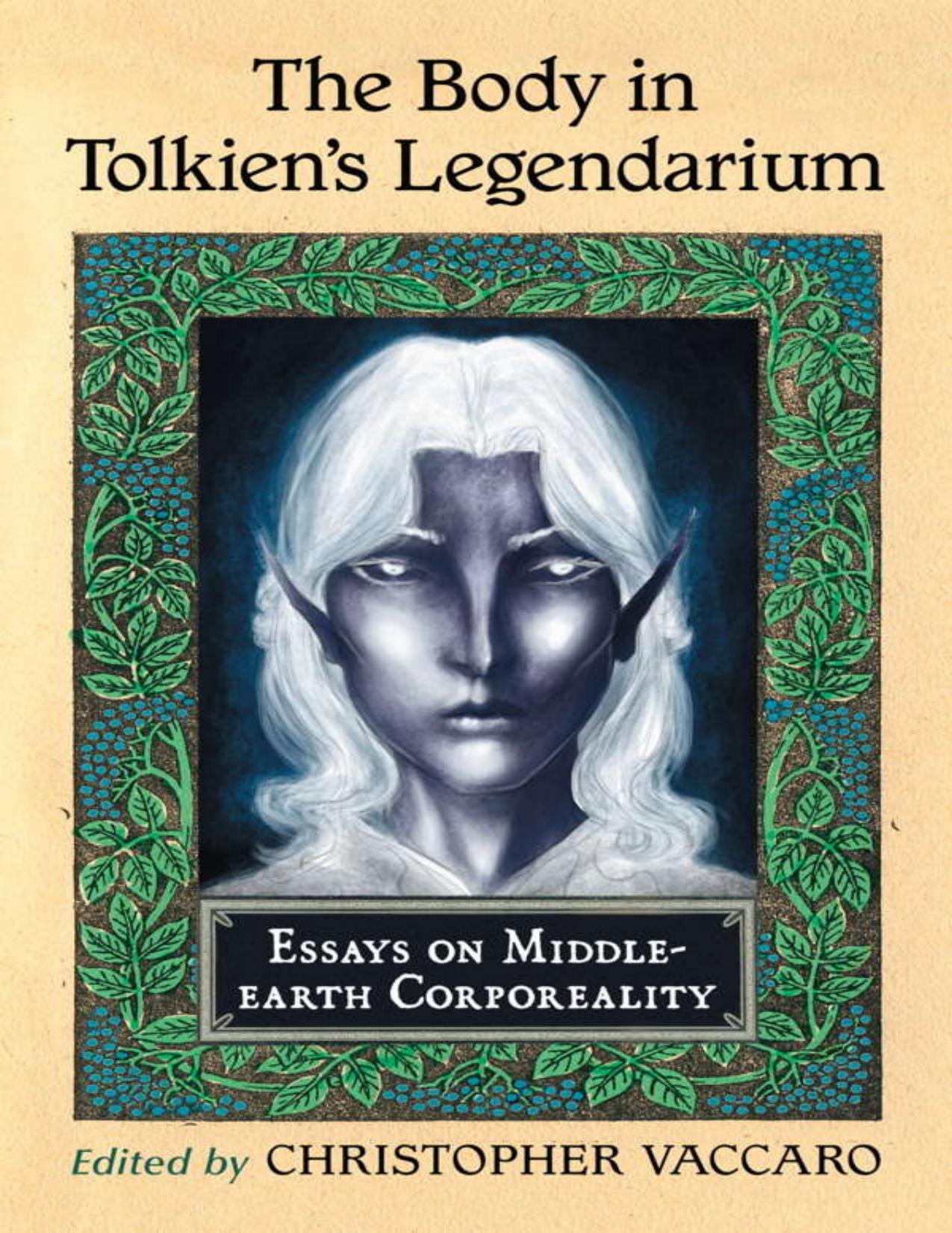The Body in Tolkien's Legendarium by Christopher Vaccaro

Author:Christopher Vaccaro [Vaccaro, Christopher]
Language: eng
Format: epub, pdf
Publisher: McFarland & Company, Inc., Publishers
Published: 2013-08-29T04:00:00+00:00
Notes
1. Adapted from the conference paper “Blasphemy and the Creation of the Orcs” given at the 4th Annual Tolkien Conference at UVM, April 13–15, 2007.
2. Though published and partially written out of order, this paper will be regarding the two works according to their interior chronology. The purpose of this is to be able to retain the narrative coherence of Tolkien’s vision.
3. J.R.R. Tolkien, Beowulf: The Monsters and the Critics (Folcroft, PA: Folcroft Press, 1936), 17–18.
4. Tolkien, Letters, 243.
5. .As Tom Shippey began to do in “Orcs, Wraiths, Wights: Tolkien’s Images of Evil,” J.R.R. Tolkien and His Literary Resonances: Views of Middle-earth, ed. George Clark and Daniel Timmons (Westport, CT: Greenwood Press, 2000), 183–189.
6. Sil, 3.
7. Jeffrey Jerome Cohen, Of Giants: Sex, Monsters, and the Middle Ages (Minneapolis: University of Minnesota Press, 1999), 25.
8. Thomas Aquinas, Summa Contra Gentiles, III.10.1951. For a detailed examination of Aquinas’ statement, see Norman Kretzmann, “III. Badness,” Medieval Philosophy and Theology 9.2 (September 2000), 147.
9. Although Tolkien never explicitly rejected the idea that orcs were bred from elves, his final essays on the subject favor men as the origin of these creatures. Due to the fact that The Silmarillion retains elves as the origin, I refer to orcs as corruptions of both elves and men. Within the context of Athrabeth Finrod in Morgoth’s Ring, which discusses the close association of men and elves, the dual origins of the orcs makes sense and is in keeping with the Legendarium and Tolkien’s notes.
10. Sil, 29.
11. Aquinas, III.10.1946a. Kretzmann, 151.
12. Aquinas, III.5&6.1899. “A substance is bad ... in some respect and to some extent if and only if ‘it lacks something that [1] is natural for it and that [2] it ought (debet) to have.’” Kretzmann, 136.
13. For Aquinas, see Kretzmann, 152.
14. Sil, 18.
15. Ibid., 38.
16. Ibid., 18.
17. Tom Shippey, The Road to Middle-earth (Boston: Houghton Mifflin, 1983), 174.
18. Sil, 47.
19. “On Fairy-Stories,” Google Scholar, http://www.doc.ic.ac.uk/~rac101/texts/tolkien.pdf, 11.
20. Morgoth’s Ring, 417.
21. Ibid., 418.
22. Ibid., 420.
23. Ibid., 419.
24. Athrabeth Finroth is an example of Tolkien trying to understand the Fall and humanity’s yearning to return to a previous, perfect state.
25. Letters, 195; Morgoth’s Ring, 409–11.
26. Morgoth’s Ring, 419.
27. Aquinas, III.4.1892. Kretzmann, 126.
28. Anderson Rearick III, “Why Is the Only Good Orc a Dead Orc? The Dark Face of Racism Examined in Tolkien’s World,” Modern Fiction Studies 50.4 (Winter 2004), 870.
29. Morgoth’s Ring, 410, 417.
30. Nataša Tucev, “The Knife, the Sting and the Tooth: Manifestations of the Shadow in The Lord of the Rings,” Linguistics and Literature 3.1 (2004), 4.
31. Morgoth’s Ring, 417–418.
32. Ibid., 421.
33. J.S. Ryan, “German Mythology Applied. The Extension of the Literary Folk Memory,” Folklore 77.1 (Spring 1966), 47; Cohen, Of Giants, xvii.
34. Cohen, Of Giants, 35.
35. Lisa Silverman, Tortured Subjects: Pain, Truth, and the Body in Early Modern France (Chicago: University of Chicago Press, 2001), 9.
36. Randel Helms, Tolkien’s World (Boston: Houghton Mifflin, 1974), 69.
37. Letters, 286–87.
38. Cohen, Of Giants, 26.
39. Shippey, “Orcs, Wraiths, Wights,” 188.
40. Sil, 29.
41. As Shippey points out, inability to find sustenance in poison extends to an inability to base behavior on a code of complete amorality.
Download
The Body in Tolkien's Legendarium by Christopher Vaccaro.pdf
This site does not store any files on its server. We only index and link to content provided by other sites. Please contact the content providers to delete copyright contents if any and email us, we'll remove relevant links or contents immediately.
| African | Asian |
| Australian & Oceanian | Canadian |
| Caribbean & Latin American | European |
| Jewish | Middle Eastern |
| Russian | United States |
4 3 2 1: A Novel by Paul Auster(12288)
The handmaid's tale by Margaret Atwood(7681)
Giovanni's Room by James Baldwin(7195)
Asking the Right Questions: A Guide to Critical Thinking by M. Neil Browne & Stuart M. Keeley(5649)
Big Magic: Creative Living Beyond Fear by Elizabeth Gilbert(5615)
Ego Is the Enemy by Ryan Holiday(5295)
The Body: A Guide for Occupants by Bill Bryson(4975)
On Writing A Memoir of the Craft by Stephen King(4863)
Ken Follett - World without end by Ken Follett(4646)
Adulting by Kelly Williams Brown(4488)
Bluets by Maggie Nelson(4476)
Eat That Frog! by Brian Tracy(4436)
Guilty Pleasures by Laurell K Hamilton(4362)
The Poetry of Pablo Neruda by Pablo Neruda(4041)
Alive: The Story of the Andes Survivors by Piers Paul Read(3970)
White Noise - A Novel by Don DeLillo(3954)
Fingerprints of the Gods by Graham Hancock(3943)
The Book of Joy by Dalai Lama(3903)
The Bookshop by Penelope Fitzgerald(3777)
